Dealing with the IoOT
No, the title is not a typo. I'm coining the acronym Internet of Outdated Things! I've written in the past about keeping devices updated and the recent KRACK attack brings this issue back to the forefront. I've already updated by UniFi access points and am waiting for updates from Apple and Amazon for clients that I have connecting over WiFi. The only other devices that I have on my WiFi network are a few old SlimDevices Squeezeboxes.
These Squeezebox Radios are now over 5 years old, but still going strong. All our music in the house is streamed through 3 other Squeezebox devices that are hard wired, so I'm not concerned about those. Since Logitech stopped supporting these devices several years ago, I can't realistically expect to get a firmware update to fix this WiFi issue. However, should I just toss the devices because I can't get a firmware update? For some devices I'd take the opportunity to upgrade, but our music system has been running so well for so long that I'm not going to touch it. Where does that leave me? While the KRACK attack is mostly theoretical right now and the attacker must be in close proximity, I decided I had to figure out a way to mitigate this just for my own piece of mind.
I decided to start with the work I documented last year on blocking my IP cameras from talking to the Internet and modify it for this situation. This is a little different because I only want the Squeezebox devices talking to my Media Center running the Logitech Media Server and I want the devices to be able to talk to the Internet in order to stream music. Unlike last year, this exercise is all being done in the UniFi controller since I'm using a USG and UniFi access points.
So let's begin:
- In the UniFi controller, go into Settings and select Networks.
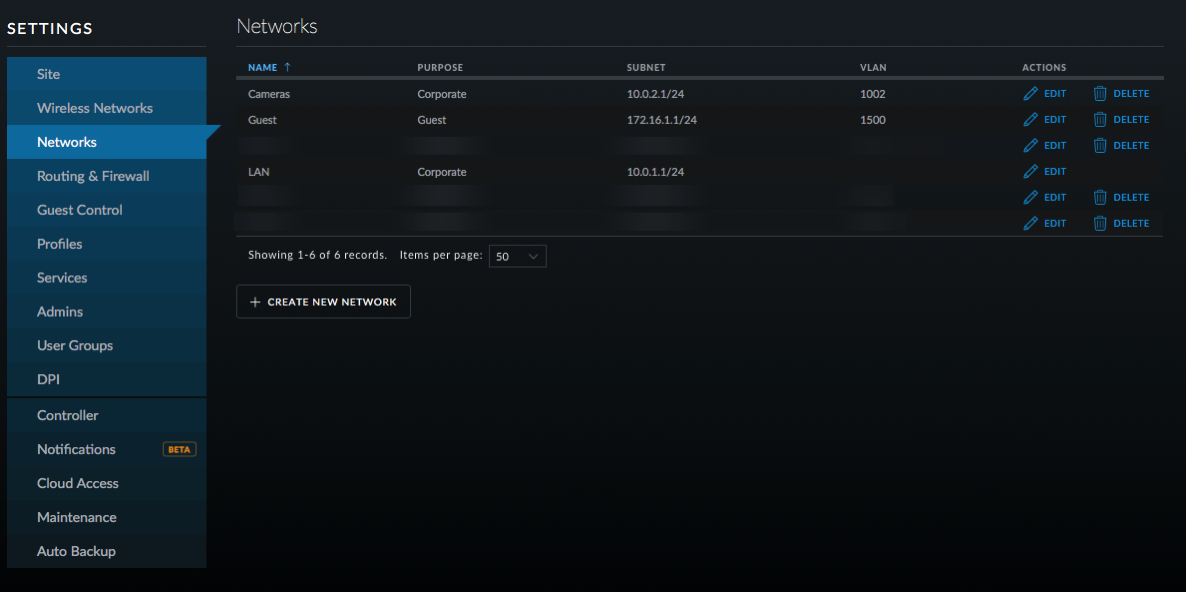
- Click on Create New Network.
- Enter a name for the network; I chose Music.
- Leave it on Corporate and LAN1.
- Enter a VLAN number; I chose 1006 and then enter the gateway as 10.0.6.1/24 or something similar depending on your network. Click on Update DHCP Range.
- You can enable DHCP guarding if you like so that only the USG is recognized as a DHCP server.
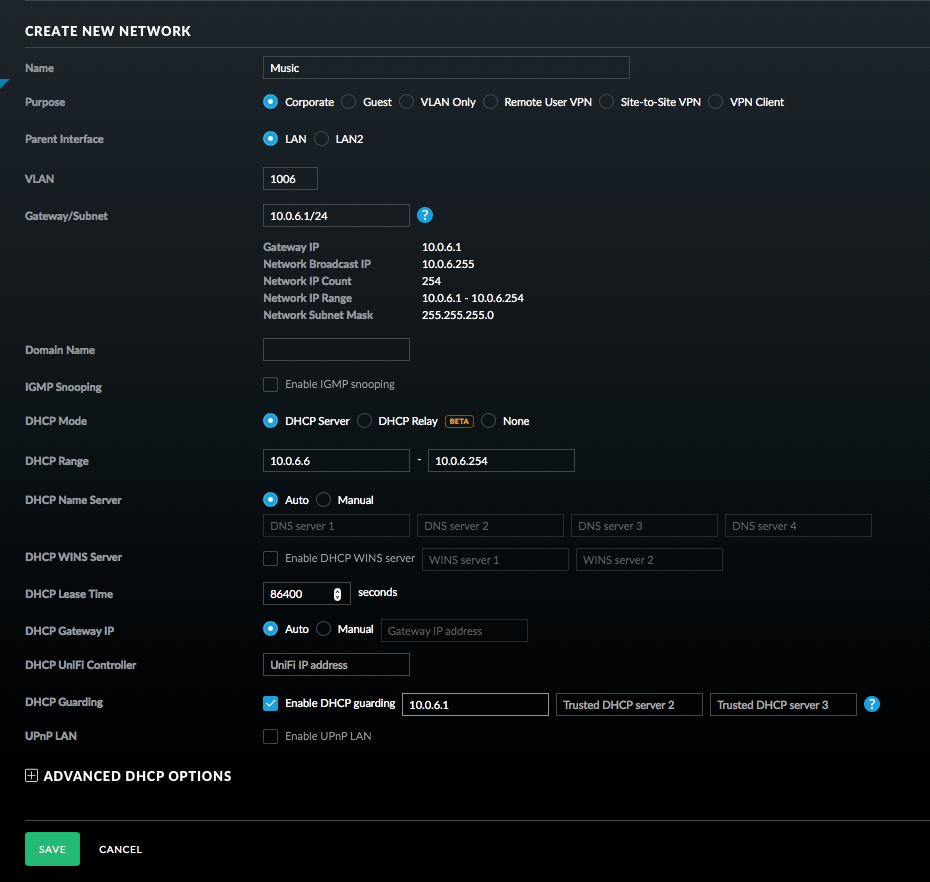
- Click Save.
- Click on Wireless Networks and then Create New Wireless Network.

- Name the new network and turn on WPA Personal Security with a Security Key.
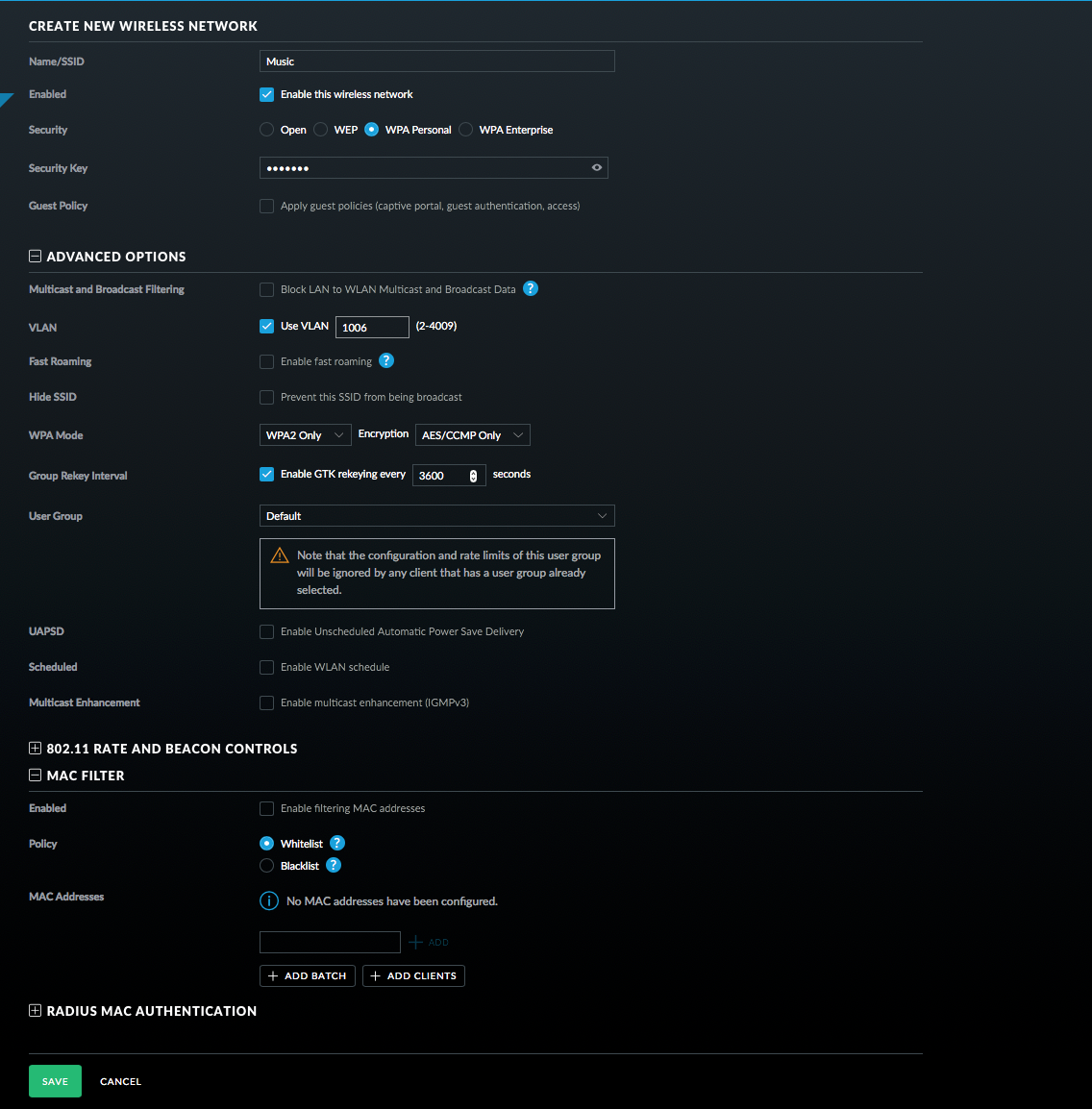
- Select Use VLAN and enter the VLAN you setup before.
- Click on Advanced Options and then on MAC Filter (note this may not be in all versions of the controller software).
- Whitelist your devices that you want to connect (this is not necessary and MAC addresses can be spoofed, but it can't hurt).
- Click Save.
- Click on Routing & Firewall, Firewall, and then Select Groups. These groups will be used later in the firewall rules.
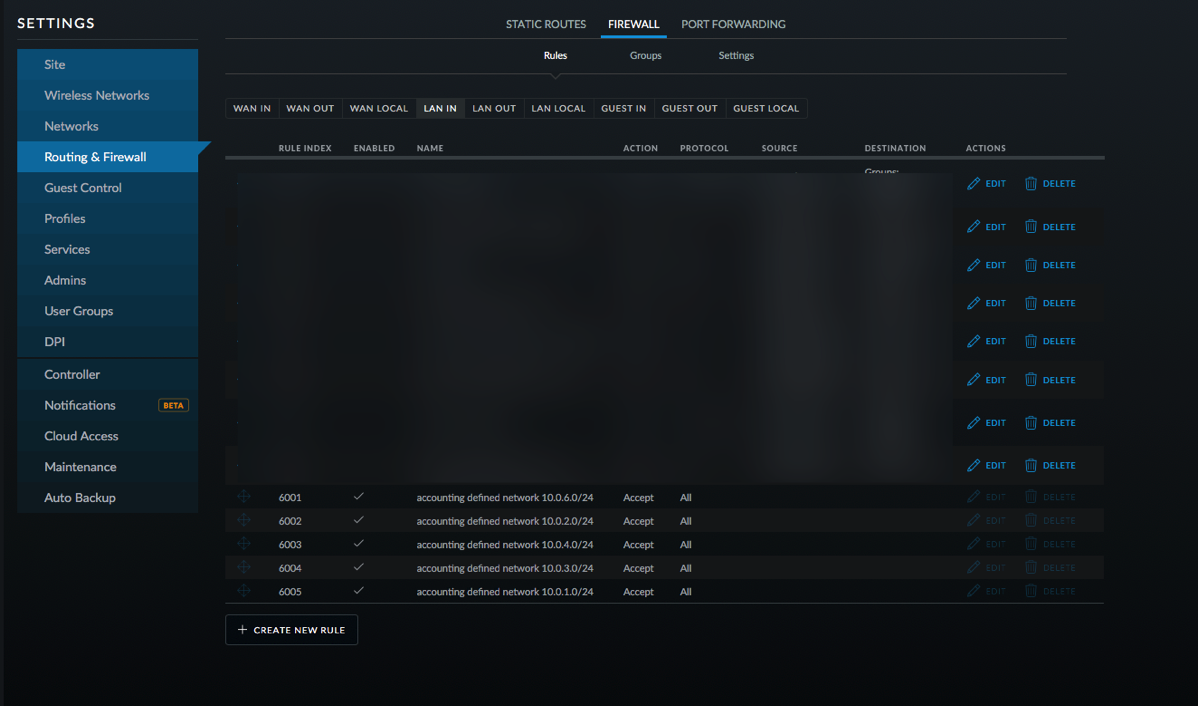
- Click Create New Group. Set it up as a Port group with 53, 123, and 67 as the ports. Name it DNS _ NTP _ DHCP.
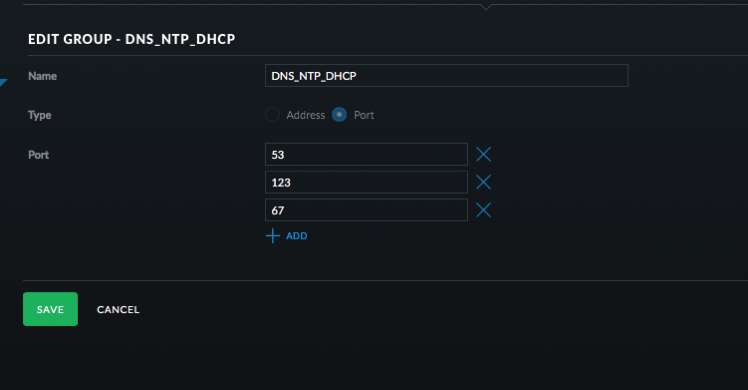
- Click Save.
- Click Create New Group. Address group and use 10.0.0.0/8 and then click Save.
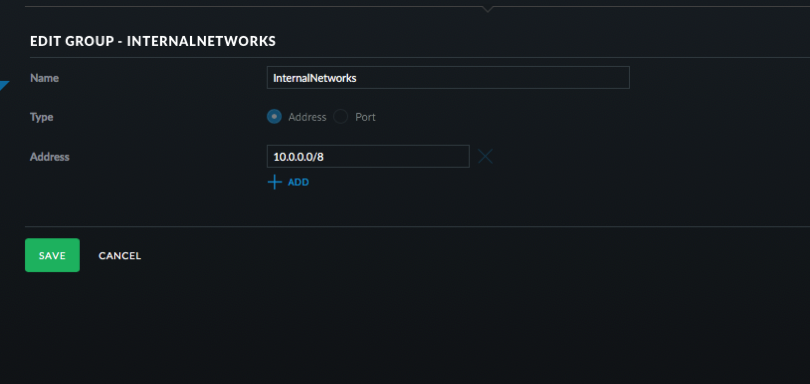
- Click Create New Group. Address group and use 10.0.1.100 or whatever is the address of your Logitech Music Server. Click Save.
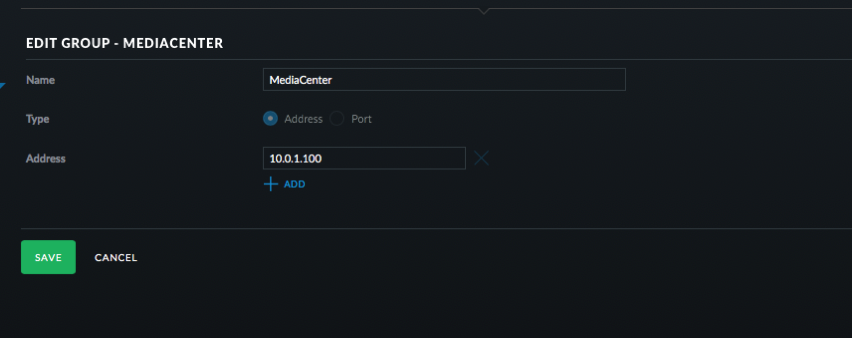
- Click Create New Group. Port group and use 9090, 3483, and 900. Click Save.
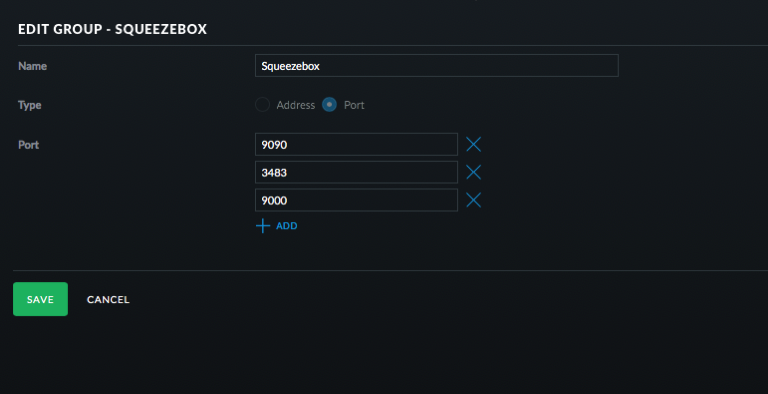
- Click on Rules and then LAN Local.
- Click Create New Rule.
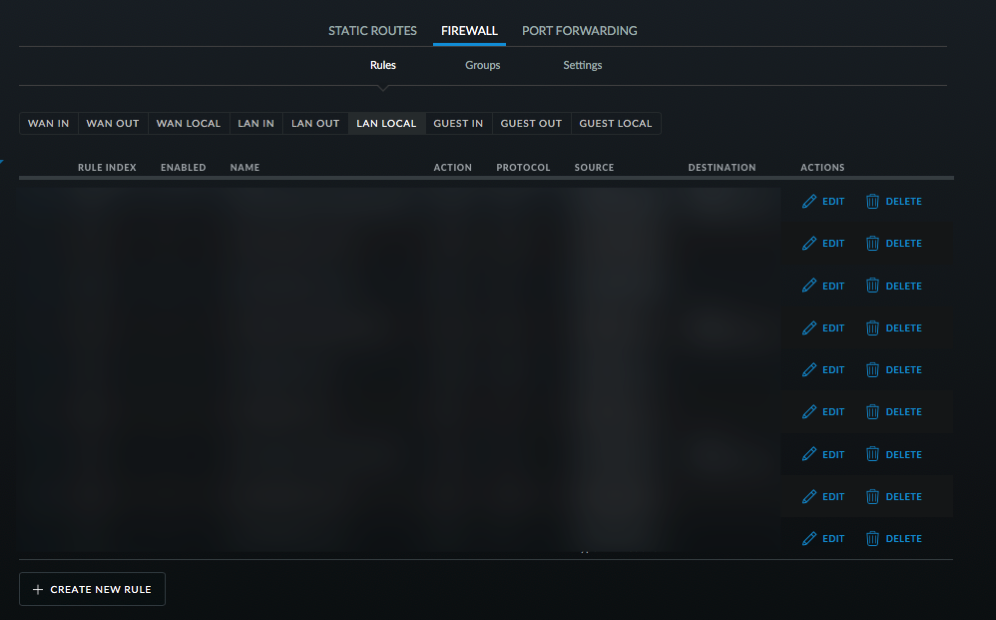
- Configure this rule to allow DNS, NTP, and DHCP requests from the Squeezebox devices to the router. Select UDP, New/Established/Related. Then select the Music Network and then the DNS _ NTP _DHCP port group as seen in the picture. Click Save.
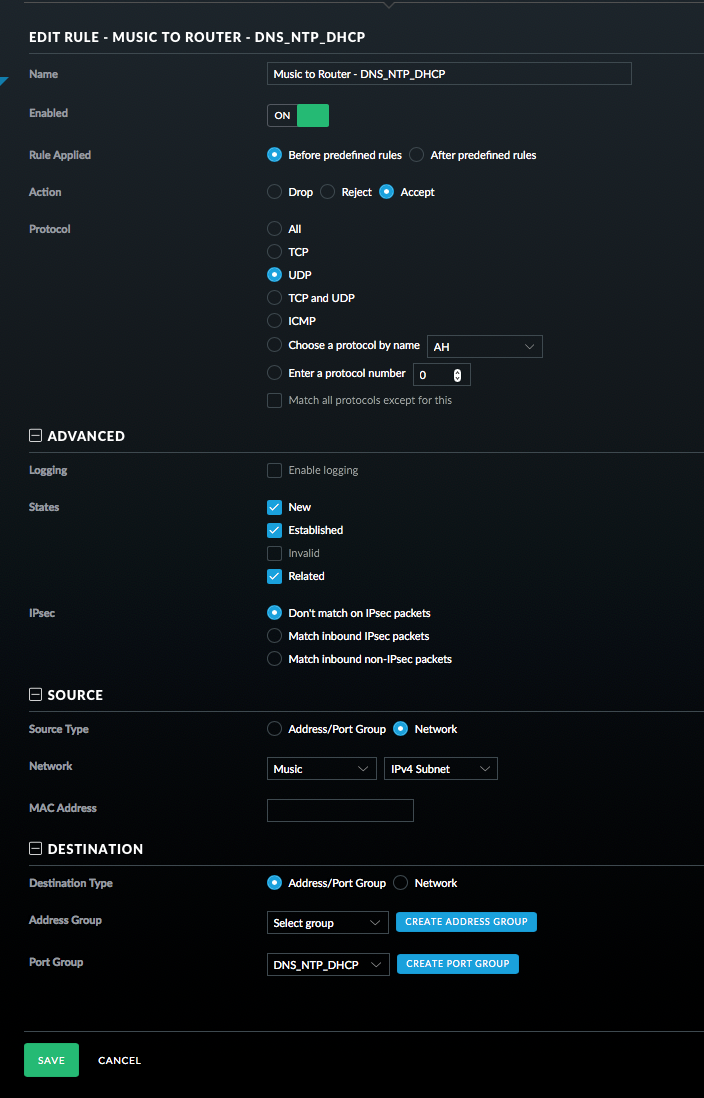
- Add a Rule for ICMP packets. See picture.
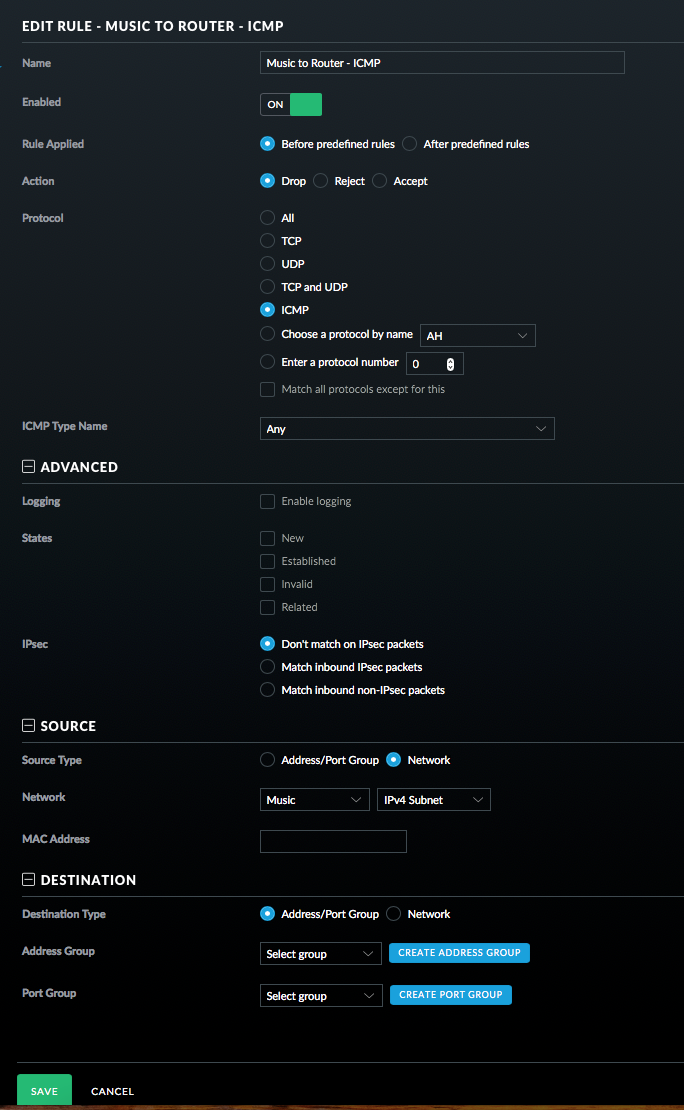
- Finally for this section, add a rule to drop all other traffic. This must be the last rule in this set.
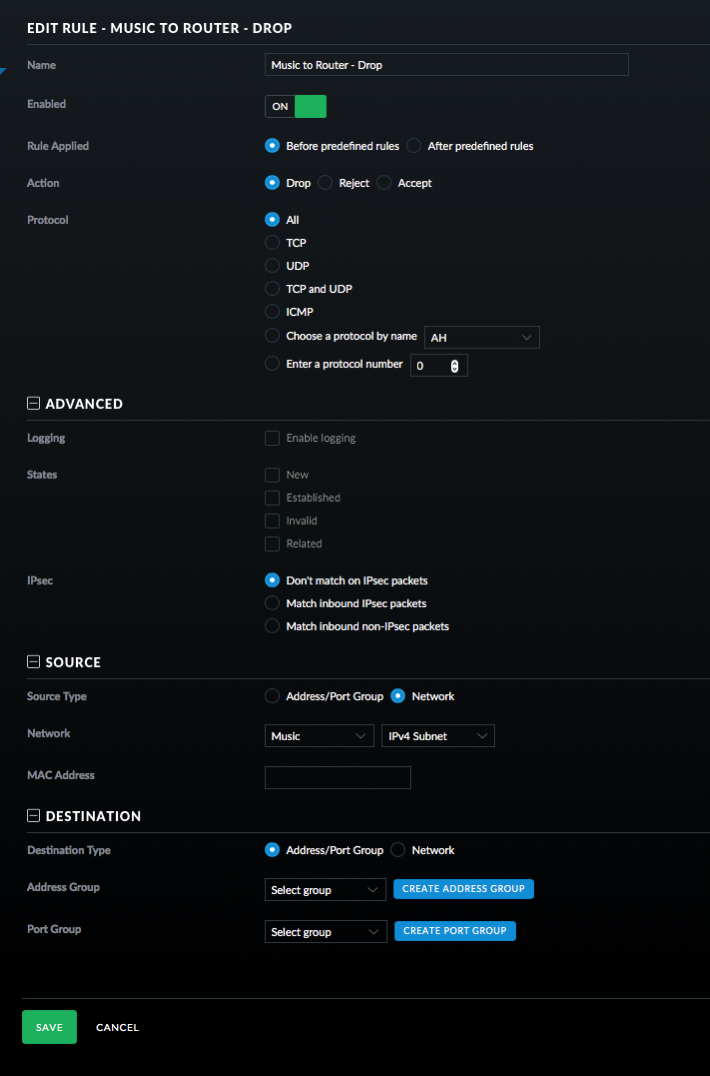
- Click on LAN IN and then Create New Rule.
- This rule allows traffic from the Squeezebox to the Media Center.
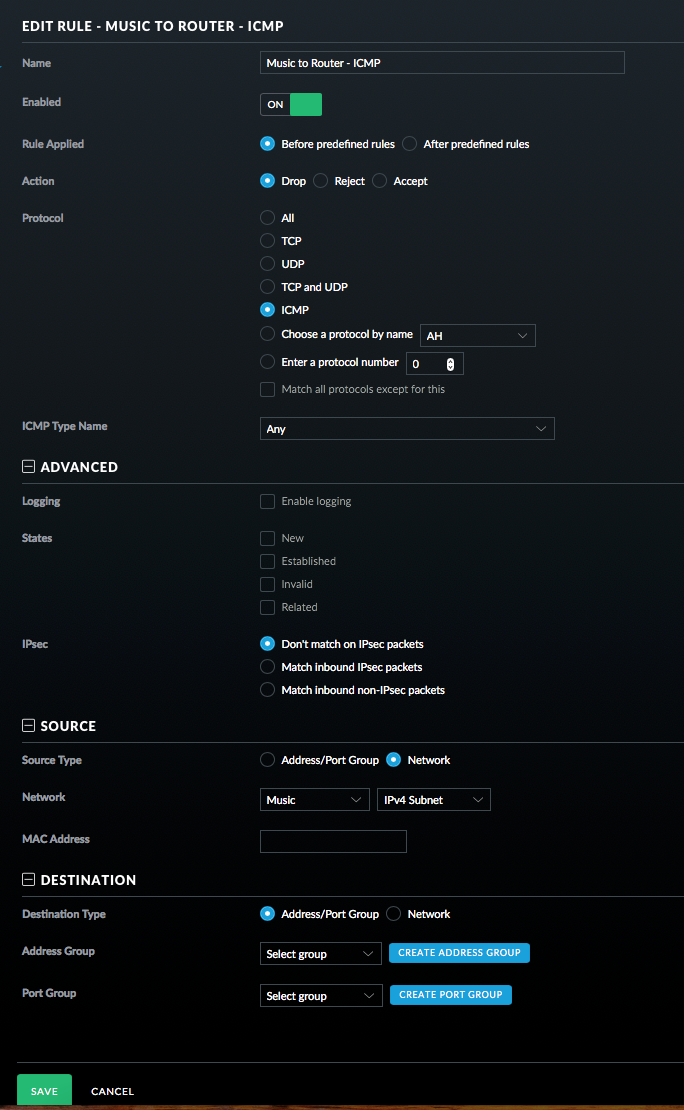
- And finally the last rule to drop all traffic from the Squeezebox to the internal network.
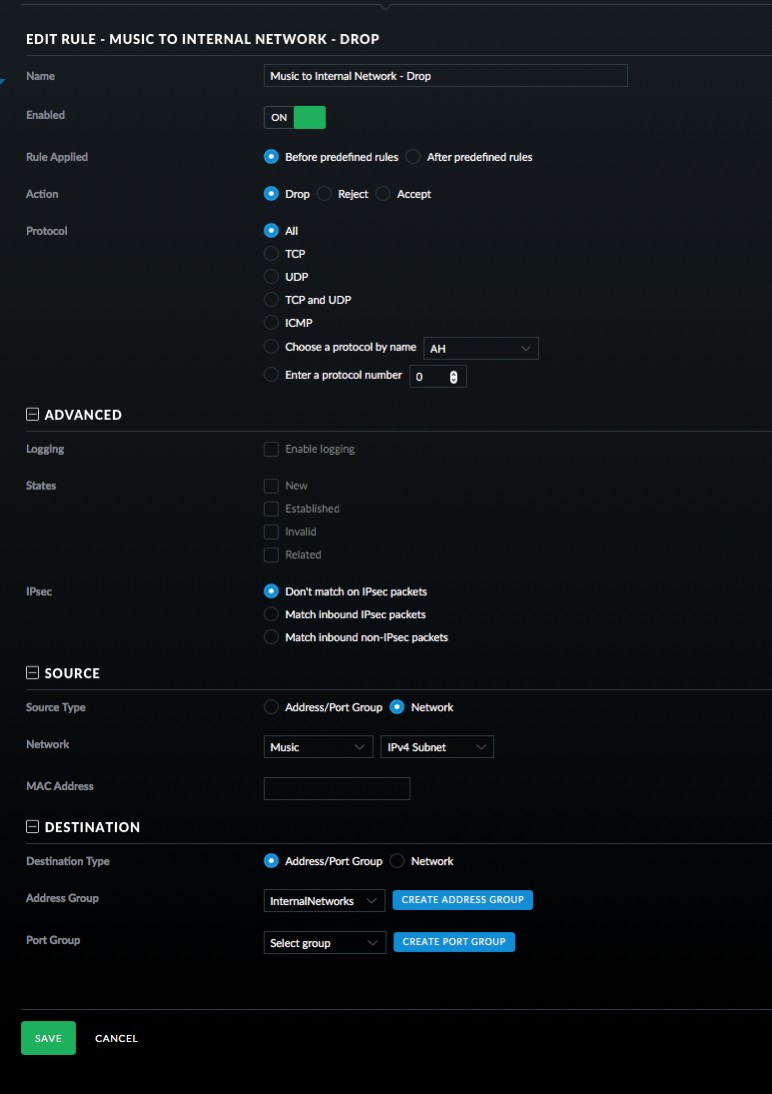
- On the Squeezeboxes, you have to enter the IP address of your Logitech Media Server as device discovery won't work over subnets without some extra steps.
Still here? The process for creating rules is quite tedious, but once you get the hang of it things start moving faster. What I've done is restricted traffic from the Squeezebox devices so that they can only talk to the Logitech Music Server on certain ports and can only talk to the router on certain ports. I also didn't setup rules for WAN traffic letting the Squeezeboxes talk to the Internet.
Will this fix KRACK? No. Will I be a target for KRACK? Probably not. Is isolating network traffic a good thing? Absolutely. If you have the know how to do this and a little time, I think it is worth it. I've gradually been moving pieces of my network to VLANs.
If there are any mistakes, please let me know! I'm not a network engineer, so it is quite possible I missed something.